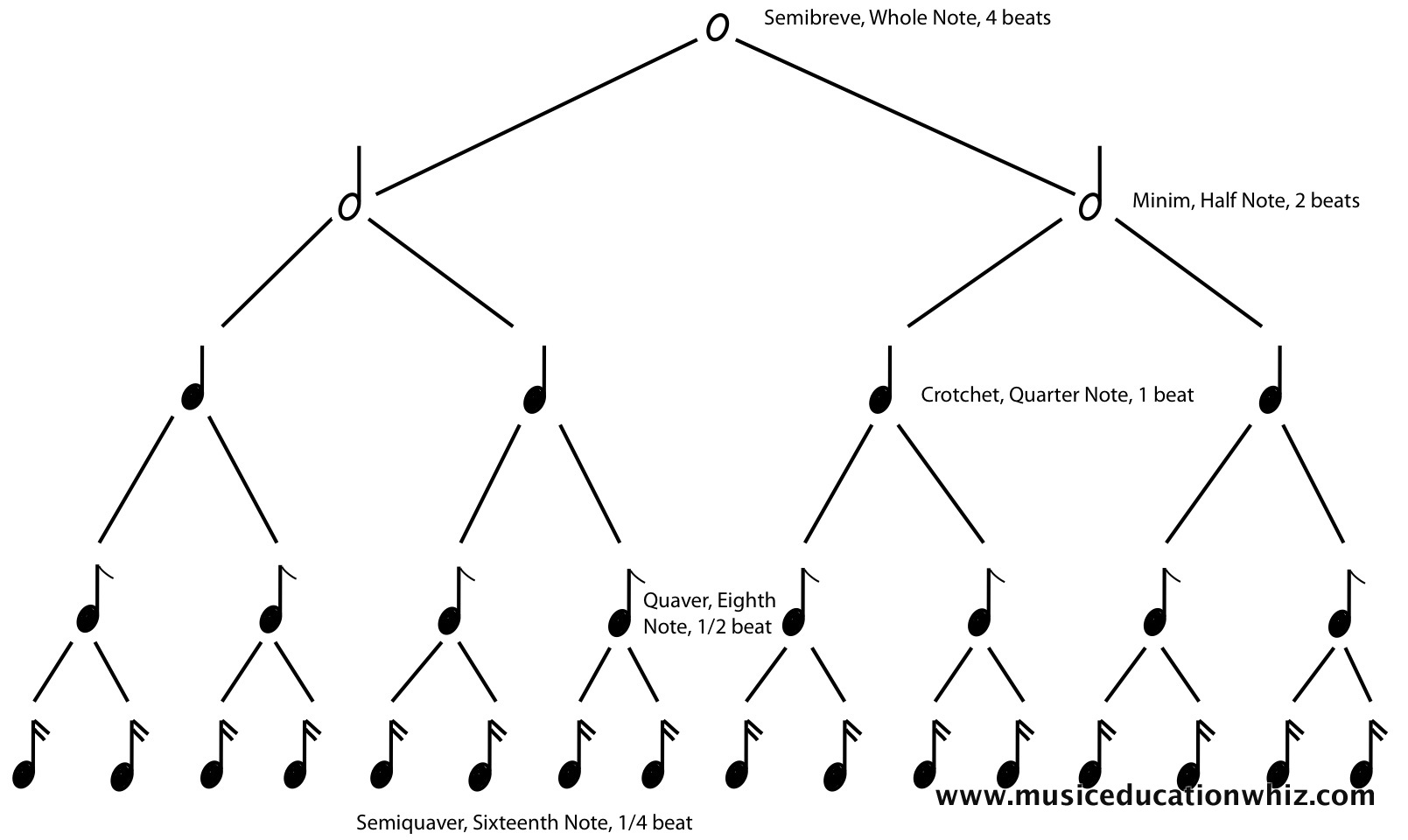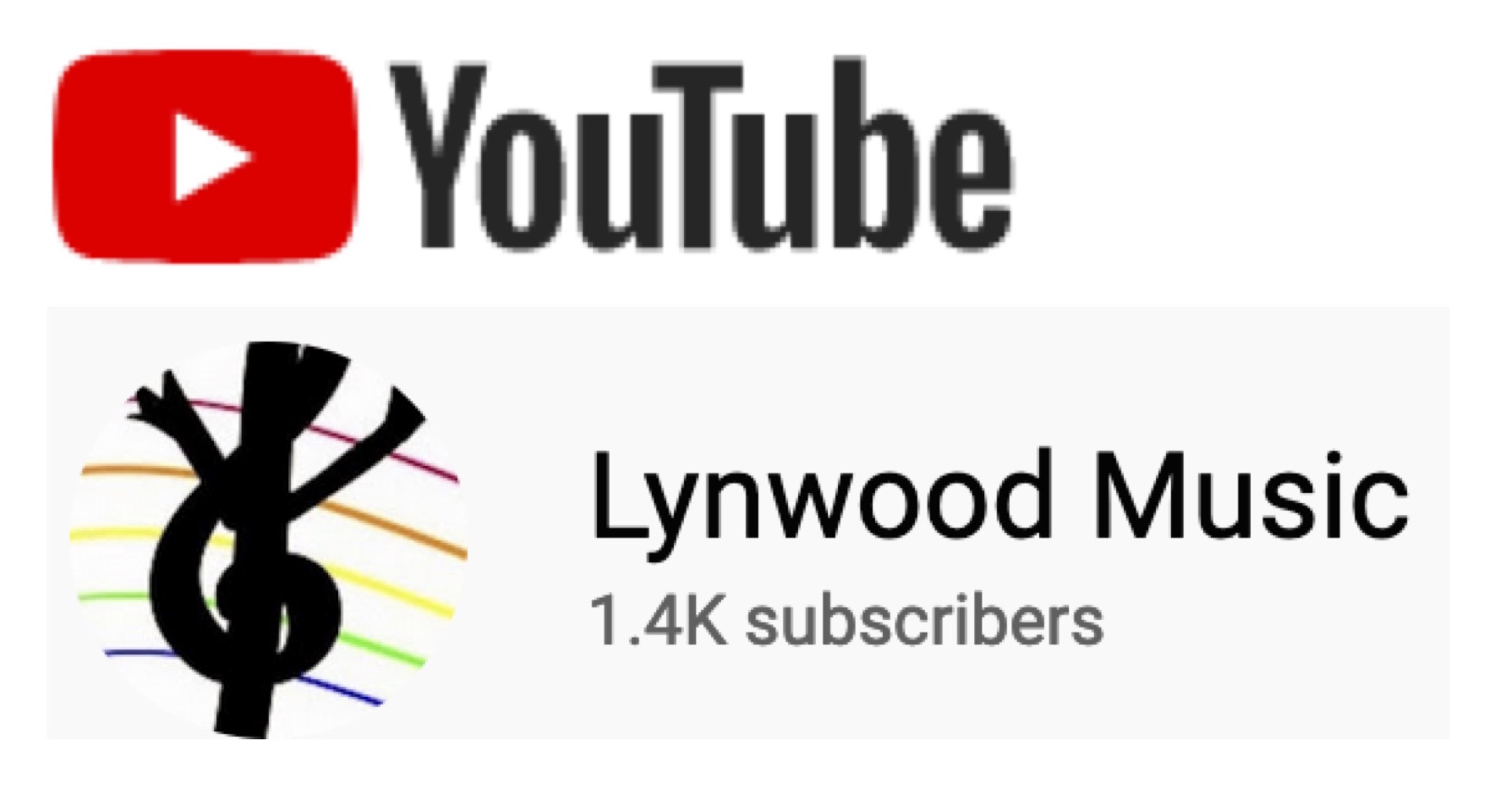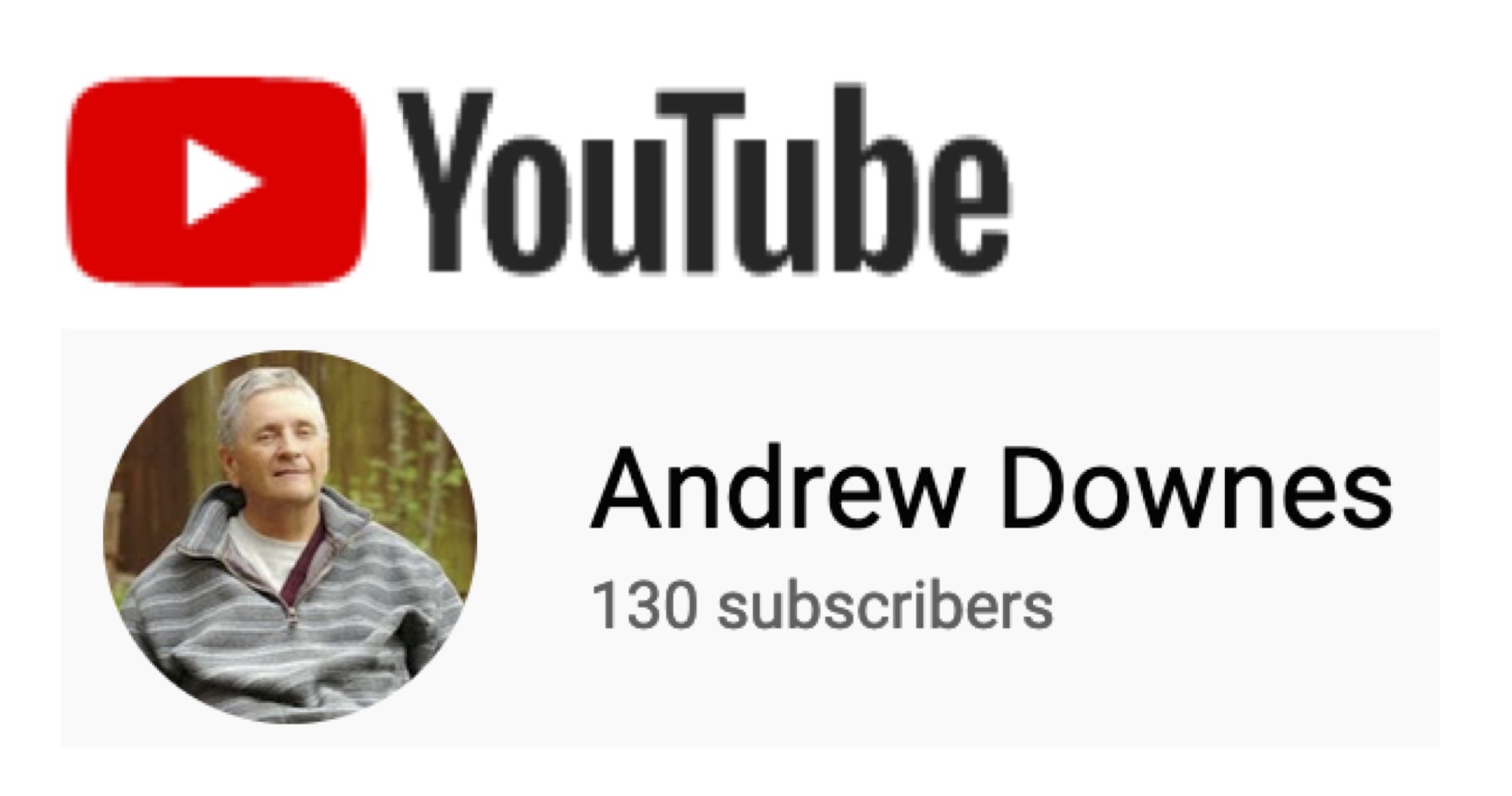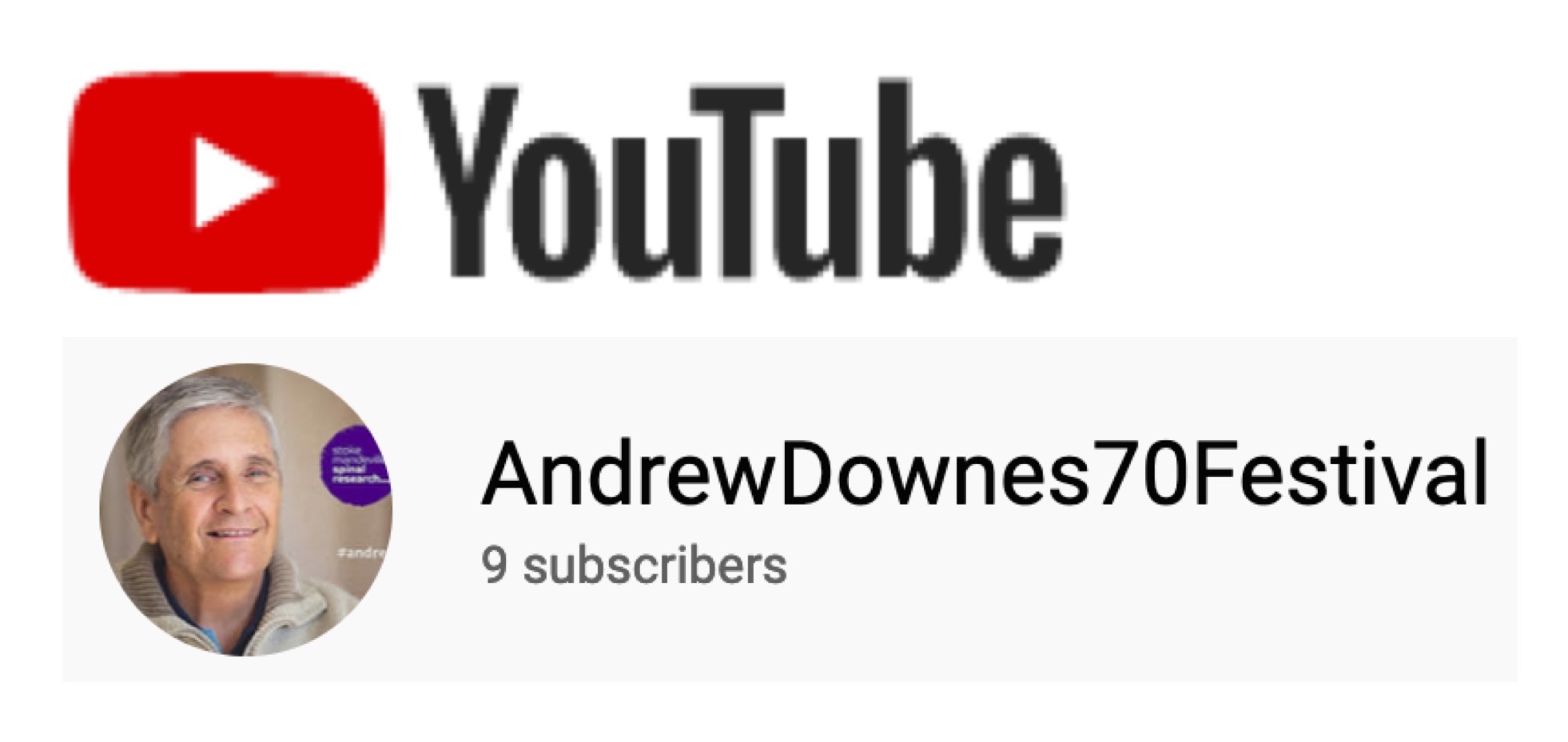Back to andrewdownes.com

Music Education
Resources by Paula Downes, a lot of music by Andrew Downes
Rhythm
Test your knowledge and download our worksheets:
- Musical Maths Worksheet
- Musical Maths Extension Worksheet
- Rhythm Farm Composition Worksheet
On this page:
Introduction to Rhythm
Syllables and Movement
Notation
Composition Video
What does a dot do to a note?
Triplets, Quintuplets, Sextuplets, Septuplets, 2s against 3s, 3s against 4s
Rests
Rhythm needs to be a natural part of our bodies rather than something we try to add on from the outside. It therefore needs to be internalised before we attempt to learn musical notation.
The teaching ideas presented below take you through a sequence of methods, helping children to eventually learn notation after having developed their musical ear and rhythmic sense through singing and movement, building children's musicianship in a holistic way.
I would recommend that music teachers use these ideas for Elementary, Primary School and KS3 aged children.
I would also suggest that singing
teachers and choir trainers use these methods to help people to learn to
sight-sing. Some of the ideas can easily be used as warm-up exercise in
choir rehearsals and will help the singers to learn the music more quickly in
the long run.
Furthermore these methods can be
helpful to everyone learning a musical instrument. All instrumentalists would benefit from being
able to sight-sing, since this is the first step to being able to hear music in
your head before you play, and this in turn helps you to sight-read and to play
more musically. If a pupil/student is
having difficulties in this area, it is definitely worth teaching them the Kodaly
syllables.
In this section of the website, you will
find teaching ideas, free video
demonstrations, other information which can be displayed on an interactive whiteboard, and a composition worksheet to download.
Return to the top of the page
Syllables and movement
Below you will find syllables assigned to each rhythm. These are based on the Kodaly Method. Teach these to children without notation and follow my movement suggestions above each musical example. Clap a steady crotchet/quarter note pulse as you teach the syllables.
1) taaaa
Step with left foot for one beat then drag right foot slowly forwards for the other three beats. Arms should be moving in opposite direction from legs:

2) taa
Step with left foot for one beat then drag right
foot forwards for the other beat:

3) ta
Walk:

4) ti ti
Jog:

5) tika tika
Run:

6) ti tika
Big step on left foot, two smaller steps, then big step on right foot, two smaller steps. Move arms in the direction of the big steps:

7) tika ti
Start on left foot, two small steps then a big step etc. Move arms in the direction of the big step:

8) tumti
Step with left foot on the first note,
bring right foot forwards to left foot on the second note. Lift arms on longer note, drop them on
shorter note:

9) timka
Gallop pretending you are holding reigns:

10) syncopa
Big step on left foot, two small steps
(right then left), big step on right foot, two small steps (left then right). Move your arms in the same direction as your
body:

11) tiroli
Run on tiptoes, changing the direction of
arms every three notes:

12) Hippopotamus
Run on tiptoes, changing the direction of arms every five notes:

13) Pocotaceptl
Slap this on your legs, stressing the first of every six:

14) Elephants walking softly
Run like a soft elephant, changing the direction of trunk every seven notes:

Further Activities
Now divide the class into groups and get each group to perform a different pattern on the spot. Get them to perform them all at the same time, phasing them in and out, changing each group’s pattern until they have all had a go at them all. Change the dynamics by holding your hands high and low, gradually or suddenly getting higher or lower.
Next, get them to perform lots of patterns together in small groups so they have to be independent. Perhaps ask them to produce a composition based on a train journey or a machine. The tempo could change as they go through their piece.
Finally, pupils can compose their own piece, putting a combination of the different patterns together.
Notation
The diagram below is a rhythm tree. You can now teach this to the class.
Here is an extended version:
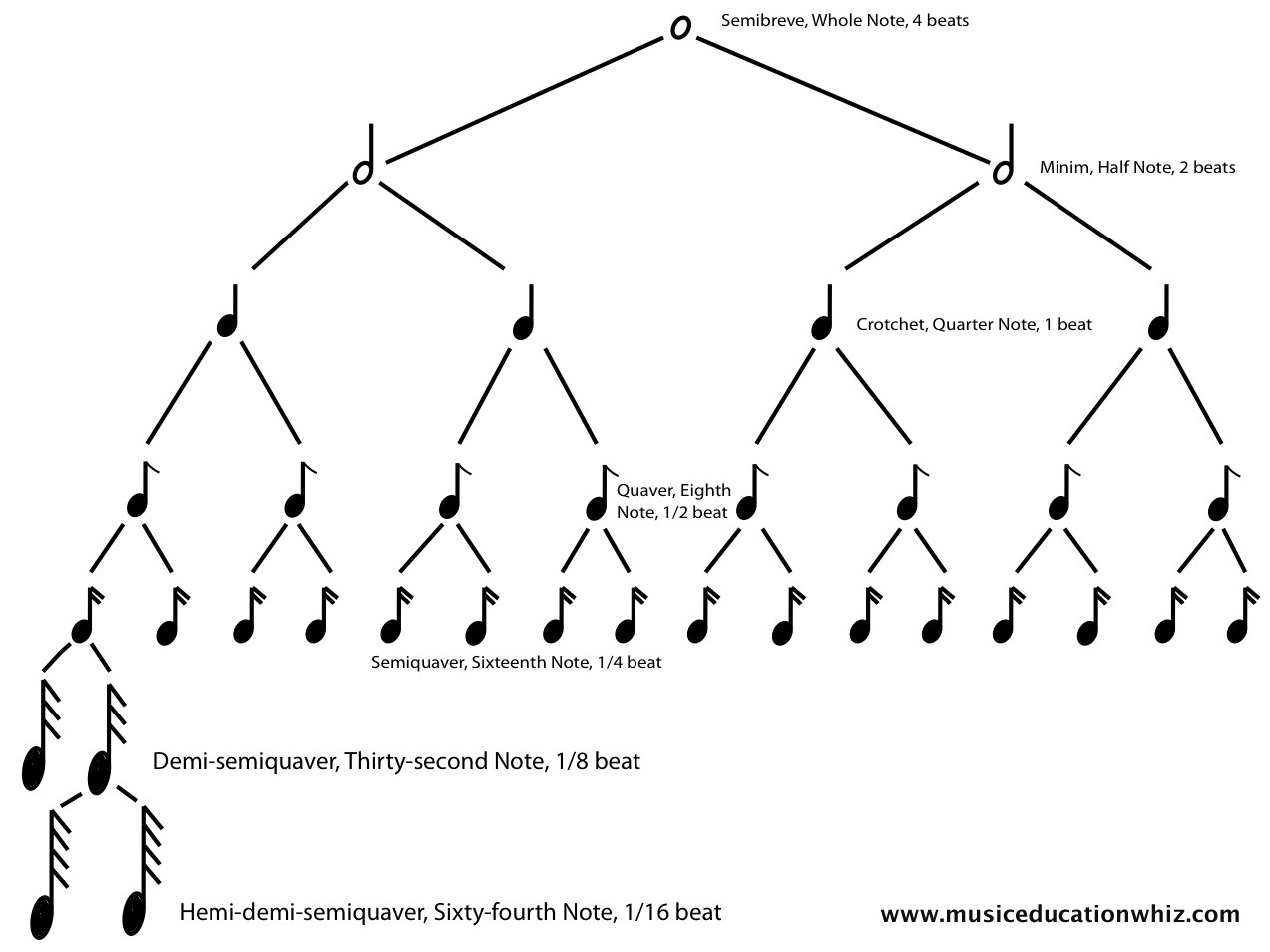
Beaming
The tails of quavers/eighth notes, semiquavers/sixteenth notes, demi-semiquavers/thirty-second notes and hemi-demi-semiquavers/sixty-fourth notes can be linked together with beams. This makes it clearer to see where the beat is.
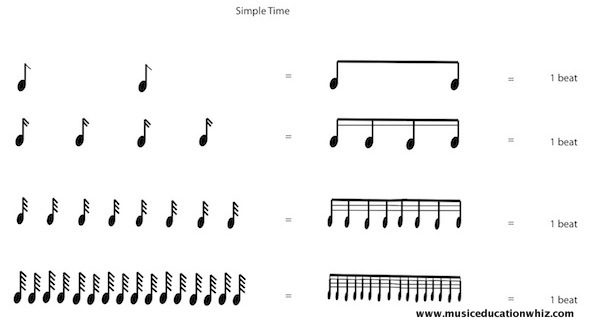
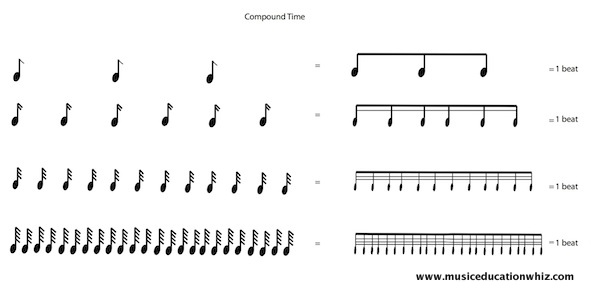
Test your knowledge and download our worksheets:
- Musical Maths Worksheet
- Musical Maths Extension Worksheet
- Rhythm Farm Composition Worksheet
Return to the top of the page
Rhythm Farm!
The video below will introduce the class to different animal sounds for each rhythm. Get the class to perform these and then download the Animal Farm Composition Worksheet.
Return to the top of the page
What does a dot do to a note?
If we add a dot after a note, we add on half of the original note value.
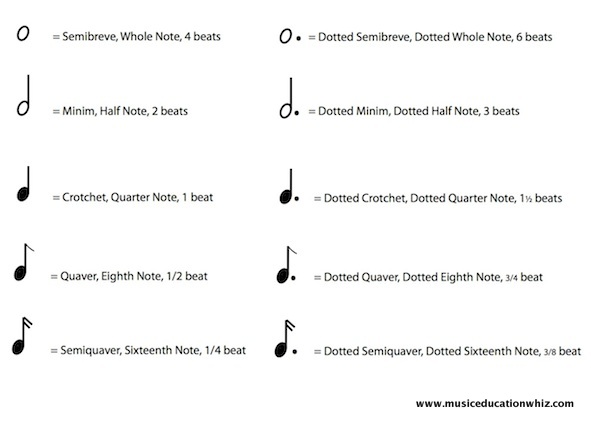
A dotted note is often paired with the note worth the same as the dot:

Test your knowledge and download our worksheets:
- Musical Maths Worksheet
- Musical Maths Extension Worksheet
- Rhythm Farm Composition Worksheet
Return to the top of the page
Triplets
Triplets are three notes in the time of two (duplets):
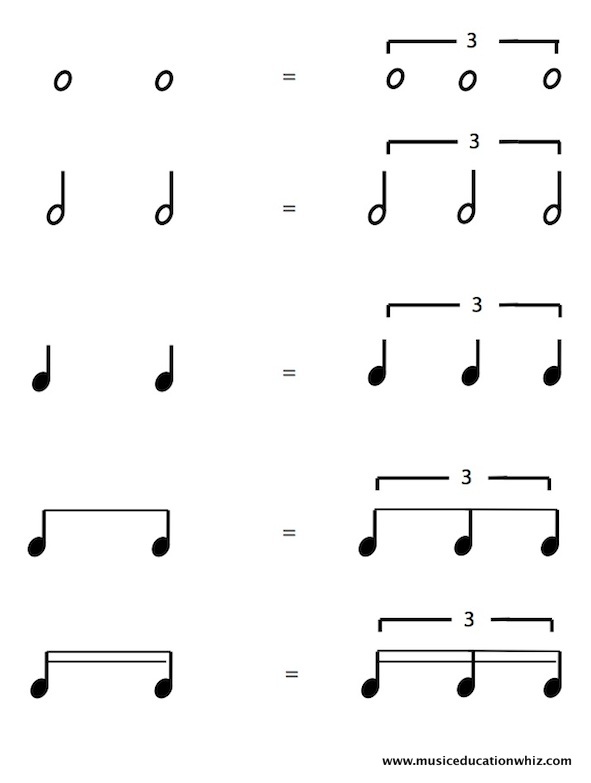
If you want to perform duplets against triplets, it is helpful to say the following as you play:
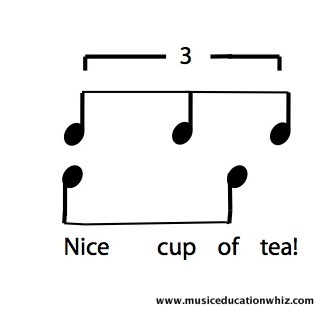
If you want to perform fours against threes, it is helpful to say the following as you play:
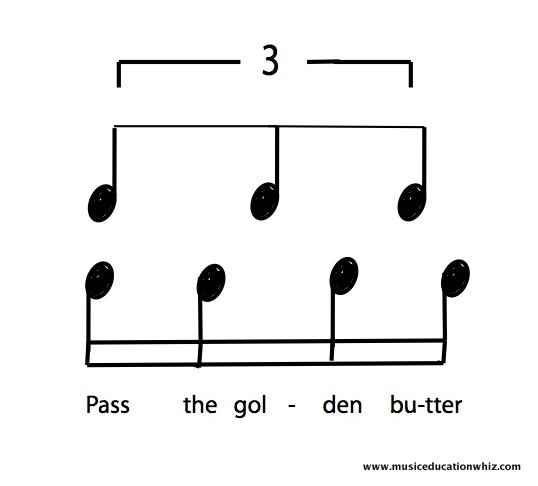
Quintuplets are five notes in the space of four:
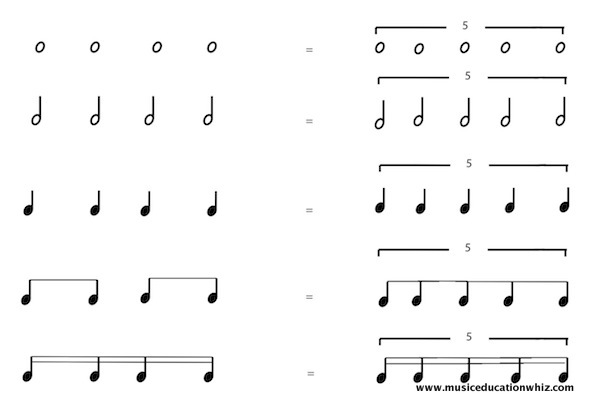
Sextuplets are six notes in the space of four notes:
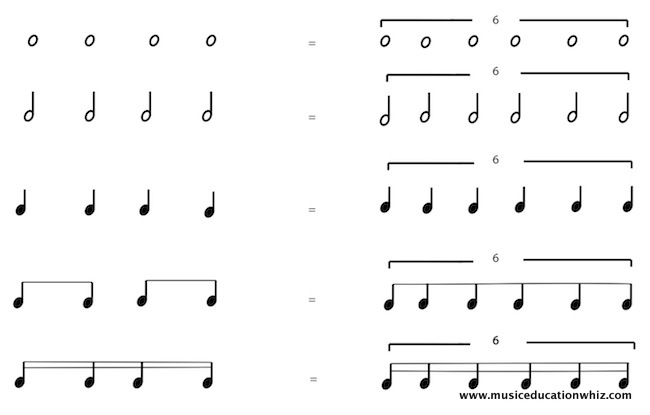
Septuplets are seven notes in the space of four in simple time, or in the space of six in compound time:
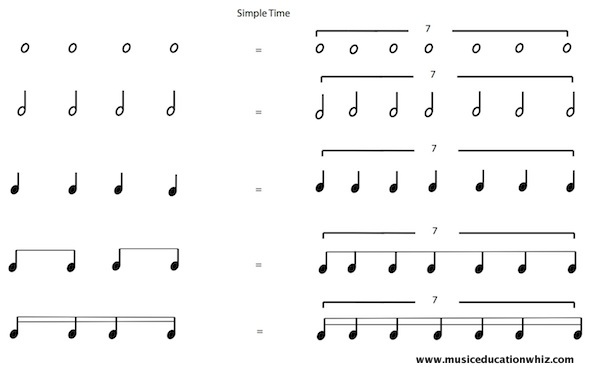
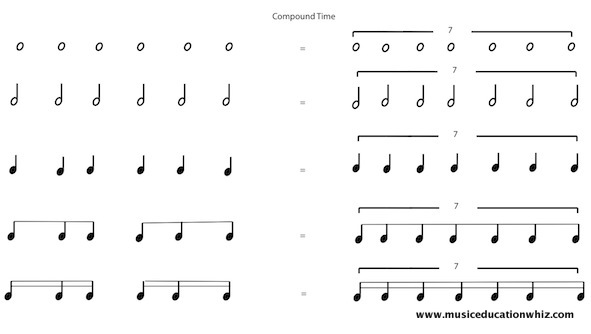
Test your knowledge and download our worksheets:
- Musical Maths Worksheet
- Musical Maths Extension Worksheet
- Rhythm Farm Composition Worksheet
Return to the top of the page
Rests
A rest is a break or pause in the music. There are different lengths of rests just as there are different lengths of notes:
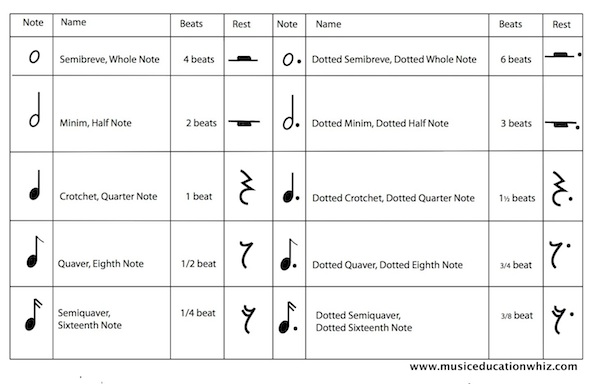
Test your knowledge and download our worksheets:
- Musical Maths Worksheet
- Musical Maths Extension Worksheet
- Rhythm Farm Composition Worksheet
Coming soon - a downloadable 'Musical Maths' Worksheet
Return to the top of the page
Home>Music Theory>Rhythm

Music Education
Resources by Paula Downes, a lot of music by Andrew Downes
Back to andrewdownes.com
Follow Cynthia Downes on Instagram to keep up-to-date with her blog posts.
If you have performed in any of Andrew Downes' works or come to listen, please share your experiences in the Premieres Blog! Also see what others have said. Thank you so much for your contribution.
